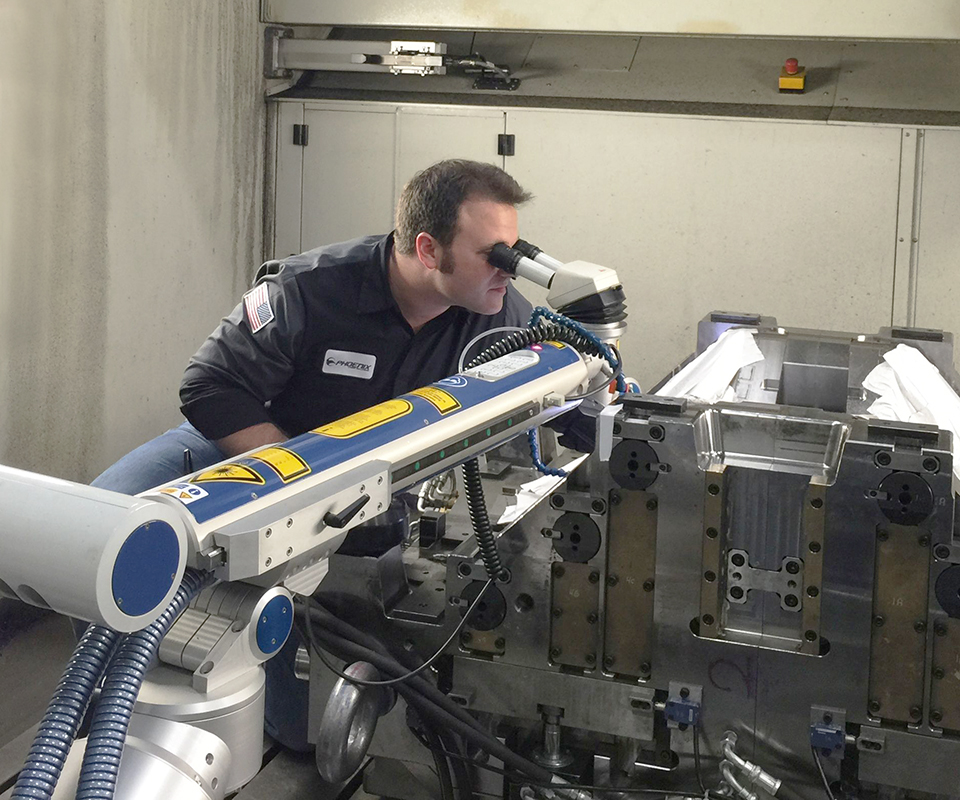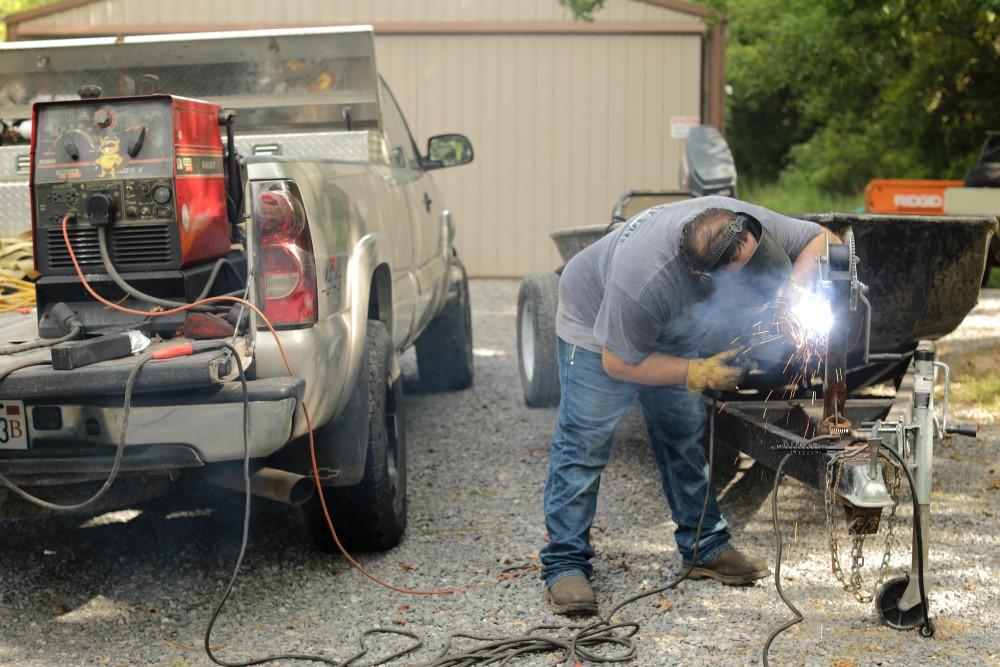Signs of weld failure and what Belgrade can do about them
Wiki Article
Everything about Welding: Key Insights Into Techniques and Ideal Practices for Success
Welding includes a selection of strategies, each matched for specific materials and applications. Comprehending these techniques, such as GMAW, SMAW, and TIG, is vital for achieving excellent outcomes. The ideal devices and safety and security methods can not be overlooked. As prep work and fixing play vital roles in the welding process, understanding these elements can substantially enhance the high quality of the end product. What are the crucial elements that ensure a successful weld?Recognizing Different Welding Methods
Welding strategies incorporate a selection of techniques, each suited to details applications and products. Among one of the most usual strategies are Gas Steel Arc Welding (GMAW), Protected Metal Arc Welding (SMAW), and Tungsten Inert Gas Welding (TIG) GMAW, additionally called MIG welding, is popular for its speed and adaptability, making it excellent for slim materials. SMAW, or stick welding, is favored for its simplicity and performance in outdoor atmospheres, particularly with thicker metals. TIG welding provides precision and control, making it ideal for elaborate job and non-ferrous steels (Montana Mobile Welding and Repair Belgrade Welding). Each method has its special benefits and factors to consider, permitting welders to select the finest approach based on the task's demands, product type, and preferred outcomes. Comprehending these strategies is vital for effective weldingVital Welding Equipment and Devices
While various welding techniques require particular abilities, the appropriate devices and tools are equally vital for achieving quality results. Important welding tools consists of welding machines, which differ relying on the strategy-- such as MIG, TIG, or stick welding. Safety gear, consisting of gloves, aprons, and safety helmets, warranties security and convenience during the process. Furthermore, components and clamps help safeguard materials in position, making sure accuracy in welds. Consumables like welding rods, wire, and protecting gas are also critical elements that affect the high quality of the weld. Furthermore, tools such as grinders and cutters promote surface preparation and post-weld ending up, adding to a specialist result. Purchasing high-grade equipment eventually improves the performance and performance of welding projects.Safety And Security Practices in Welding
Correct safety and security methods are necessary in the welding market to protect employees from potential hazards. Welders must use ideal personal protective devices (PPE), including safety helmets with correct shading, handwear covers, and flame-resistant apparel. Adequate ventilation is vital to decrease exposure to damaging fumes and gases generated throughout the welding process. In addition, workers must be educated in the appropriate handling of welding tools to avoid accidents. Fire safety steps, such as maintaining combustible products far from the welding location and having fire extinguishers conveniently offered, are necessary. Normal inspections of equipment and work areas can help recognize potential threats before they bring about crashes. By sticking to these safety practices, welders can create a safer working atmosphere and minimize risks connected with their trade.Preparing Products for Welding
Preparing products for welding is a crucial step that considerably affects the high quality and integrity of the end product (Montana Mobile Welding and Repair Belgrade). Proper prep work includes cleaning the surfaces to eliminate pollutants such as corrosion, oil, and dust, which can compromise the weld. Techniques such as grinding, sanding, or making use of solvents are generally used to achieve a clean surface. Furthermore, ensuring that the materials mesh comfortably is important; gaps can bring about weak welds. It's likewise vital to take into consideration the alignment and positioning of the elements, as this will impact the simplicity of welding and the final outcome. Choosing the ideal filler material and making sure compatibility with the base metals is vital for accomplishing strong, durable welds.Tips for Getting High-Quality Welds
Attaining high-grade welds requires attention to detail and adherence to finest techniques throughout the welding process. Appropriate joint prep work is vital, guaranteeing surfaces are totally free and tidy from contaminants. Selecting the appropriate filler product and welding strategy based upon the base metals is critical for suitable bonding. Preserving regular travel rate and angle while welding can stop flaws and advertise uniformity. Additionally, managing warmth input is necessary; too much warm can result in warping and damaged joints. On a regular basis evaluating the welds during the process permits instant modifications if required. Utilizing ideal post-weld treatments, such as cleaning and tension alleviation, can improve the resilience and integrity of the weld, eventually ensuring a successful result.Troubleshooting Typical Welding Issues
Welding commonly presents challenges that can affect the high quality and integrity of the last item. Common problems such as porosity, inconsistent weld beads, and overheating can occur, each calling for specific troubleshooting methods. Understanding these problems is necessary for welders to boost their skills and accomplish suitable outcomes.Porosity Problems Clarified
Although porosity can commonly be ignored, it stays a critical issue in welding that can endanger the stability of an ended up item. Porosity refers to the visibility of tiny gas pockets within the weld grain, which can lead and damage the joint to premature failing. This issue typically develops from impurities, wetness, or inappropriate protecting gas insurance coverage during the welding process. To alleviate porosity, welders need to validate that the base materials are completely dry and tidy, use proper protecting gases, and preserve consistent welding specifications. Frequently inspecting the equipment and setting can additionally aid determine prospective concerns before they show up in the weld. Dealing with porosity efficiently is important for achieving solid, long lasting welds that meet quality criteria.
Inconsistent Weld Beads
Irregular weld grains can substantially impact the high quality and stamina of a finished item. Numerous elements add to this problem, including inappropriate travel speed, incorrect amperage setups, and inconsistent electrode angles. When the welder relocates as well rapidly, a bead might appear narrow and do not have penetration, while relocating as well slowly can cause excessive build-up. Furthermore, making use of the incorrect amperage can result in either damaging or extreme spatter, both of which compromise weld stability. The welder's method, such as irregular torch activity, can likewise result in unequal grain appearance. To alleviate these troubles, welders should concentrate on keeping steady, controlled motions and ensuring appropriate devices settings to achieve harmony in their welds. Consistency is crucial to accomplishing strong and trusted welds.Overheating and Bending Issues
Extreme warm throughout the welding procedure can result in significant overheating and contorting concerns, affecting the architectural honesty of the work surface. These issues usually materialize as distortion, which can endanger alignment and fit-up, making additional setting up testing. Factors contributing to overheating consist of the choice of welding criteria, such as voltage and travel speed, in addition to the kind of product being bonded. To alleviate these problems, welders need to preserve regular traveling rate and proper warmth input while checking the workpiece temperature level. In addition, pre-heating or post-weld warm treatment can assist alleviate anxieties brought on by rapid cooling - Welding. Normal evaluation and adherence to finest methods are vital in avoiding overheating and making sure the durability and dependability of welded frameworksOften Asked Concerns
What Are the Profession Opportunities in the Welding Industry?
The welding industry provides varied career chances, including placements as welders, instructors, inspectors, and designers. Experts can operate in manufacturing, building and construction, aerospace, and automotive sectors, profiting from strong demand and affordable salaries in various duties.Just How Can I Improve My Welding Rate Without Sacrificing Top Quality?
To enhance welding speed without compromising quality, one should practice effective techniques, keep equipment, maximize settings, and boost hand-eye sychronisation. Regular training and seeking feedback can additionally significantly add to attaining much faster, premium welds.What Accreditations Are Offered for Welders?
Numerous accreditations exist for welders, consisting of those from the American Welding Culture (AWS), the National Facility for Construction Education And Learning and Study (NCCER), and various industry-specific companies. These qualifications enhance employability and demonstrate ability effectiveness.Exactly How Does Welding Impact the Residences of Metals?
Welding affects the homes of steels by changing their microstructure, which can lead to changes in strength, ductility, and hardness. Warm input and cooling prices throughout the process significantly influence these material characteristics.Can I Bonded Dissimilar Metals Together?

Report this wiki page